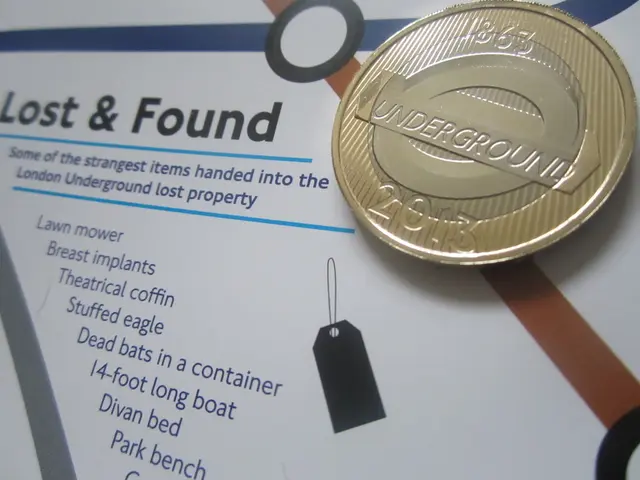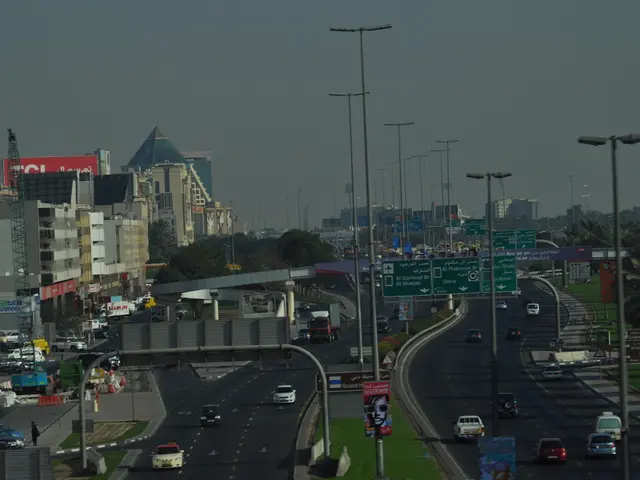Strategies to Extract and Refresh Runway Rubber: Boosting Runway Safety and Efficiency
Revised Article:
Scrubbing the Rubber off Runways: Maintenance Matters
When an aircraft lands, its tires leave rubber piles, becoming a potential safety hazard over time. These piles can reduce runway friction, causing hydroplaning or decreasing braking efficiency. Regular removal of these rubber deposits is crucial for maintaining optimal runway performance and ensuring airport safety.
** Rubber Accumulation: The Unseen Menace**
Upon landing, the tires abruptly pick up speed, causing some rubber to wear off and stick to the runway, particularly in the touchdown zones. As these deposits build up, they fill crucial drainage grooves, leading to water pooling during wet conditions.
** Rubber Removal Strategies: Tools of the Trade**
A few methods are employed to eliminate rubber deposits from runways:
1. High-Pressure Water Blasting (HPWB)
This technique uses high-pressure water jets to dislodge rubber from the runway surface, proving effective and eco-friendly. It avoids the use of harmful chemicals and damages. However, it necessitates specialized equipment and can take time.
2. Chemical Agents
Chemical agents are applied to the runway to dissolve rubber deposits, which are later rinsed off. This approach calls for careful handling to prevent environmental contamination and potential damage to runway markings.
3. Mechanical Methods
Physical techniques like shot blasting or grinding are used to scrape off the rubber. These techniques can be efficient but could potentially harm the runway surface if not handled thoughtfully.
4. Combination Approach
Blending chemical agents with high-pressure water blasting can intensify effectiveness, reducing water consumption and pressure, thereby minimizing potential surface damage.
Guidelines and Best Practices for Airport Safety
The International Civil Aviation Organization (ICAO) and the Federal Aviation Administration (FAA) provide recommendations for runway maintenance:
- ICAO suggests that regular friction testing and rubber removal are done when friction levels drop below acceptable thresholds.
- FAA advises runway friction monitoring and timely rubber removal to maintain safe braking conditions.
Airports frequently utilize Continuous Friction Measuring Equipment (CFME) to assess runway conditions and establish maintenance schedules.
Environmental and Operational Aspects
Balancing effectiveness with environmental impact is crucial during rubber removal operations. Using eco-friendly chemicals, proper waste disposal, and performing maintenance during off-peak hours are essential.
Explore more on Runway Friction Measurement Systems (RFMS):
The primary objective is maintaining runway friction through regular rubber removal using suitable techniques while adhering to guidelines and safeguarding airport operations.
References and Further Reading:- "Environmentally Friendly Runway Rubber Removal Techniques for Airports" by Journal of Engineering Research and Applications (IJERA)- "Runway Rubber Removal" by Skybrary
- The utilization of eco-friendly high-pressure water blasting (HPWB) and chemical agents in combination for rubber removal from runways not only increases effectiveness but also reduces water consumption and potential surface damage, aligning with the guidelines provided by the International Civil Aviation Organization (ICAO) and the Federal Aviation Administration (FAA) for runway maintenance.
- The integration of science and technology in the form of Continuous Friction Measuring Equipment (CFME) and Runway Friction Measurement Systems (RFMS) not only ensures runway friction levels are within acceptable thresholds but also aids in implementing the best practices for airport safety as well as managing environmental and operational aspects during rubber removal operations.







